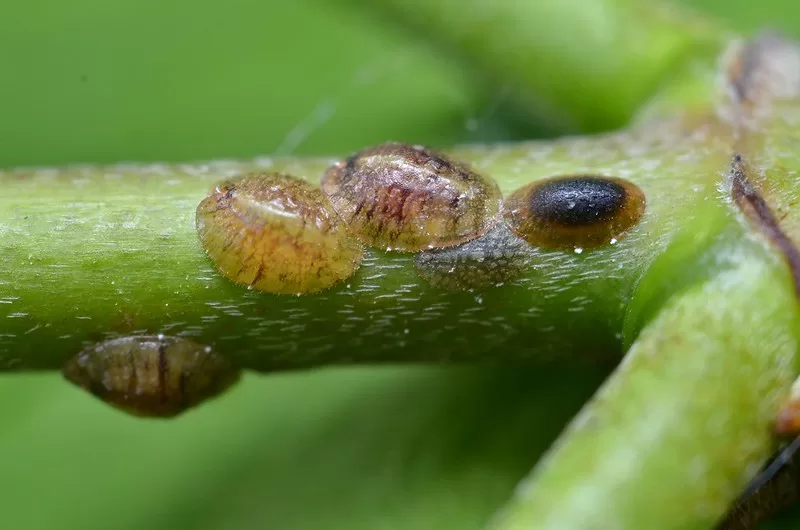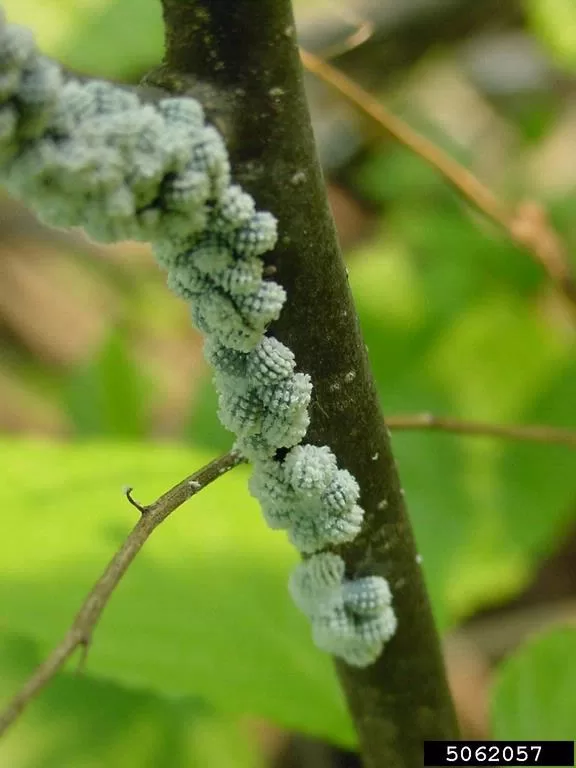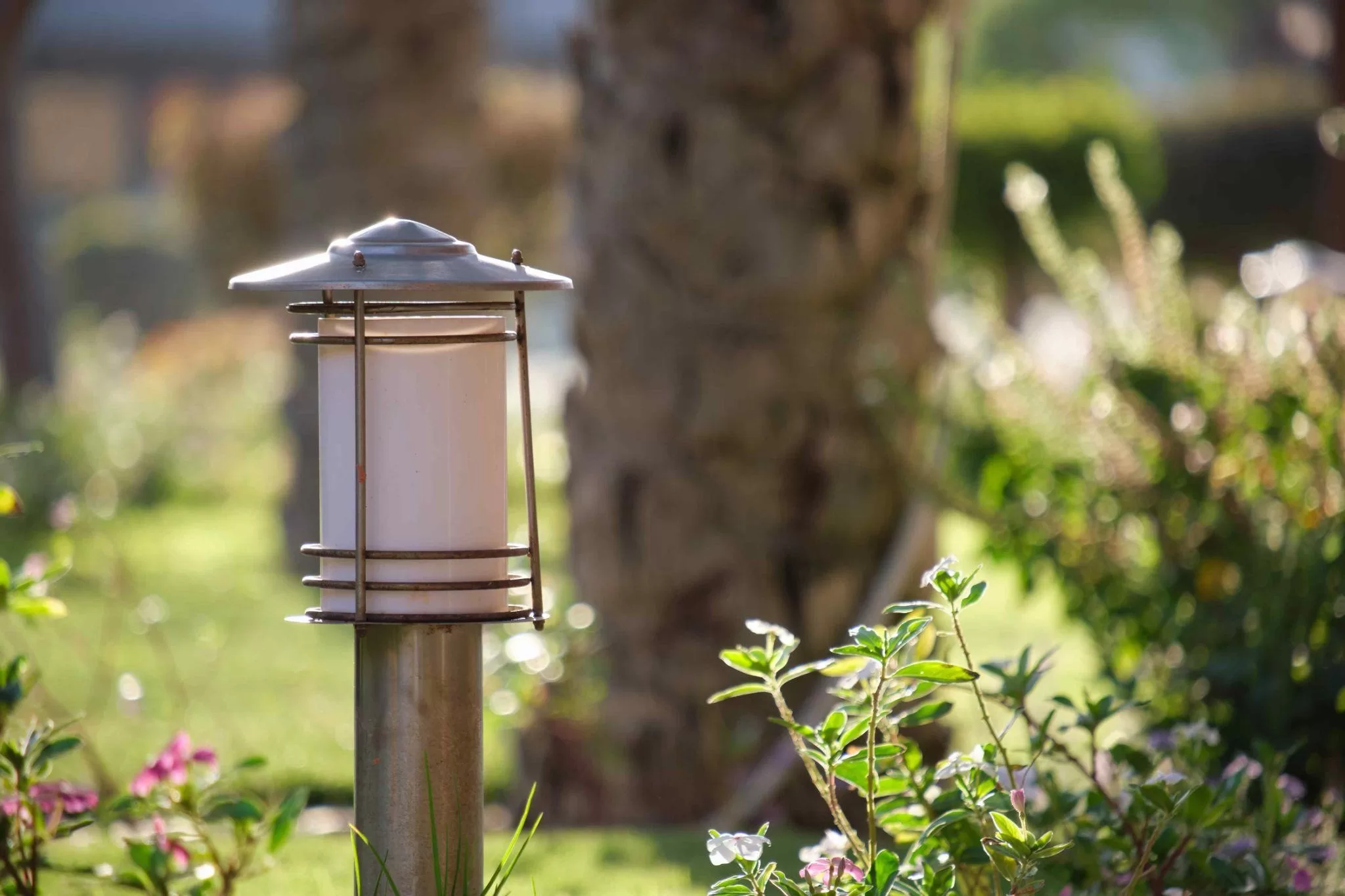Scale insects pose a prevalent and destructive threat to gardens, infesting both outdoor plants and houseplants. Identifying and eliminating them can be challenging. With over 8,000 species, scales feed on leaves, stems, and branches, leading to extensive damage in severe infestations.

Utilizing elongated, needle-like mouthparts, scales feed by extracting plant sap. Moreover, specific species generate a sticky substance called honeydew, which promotes the growth of a fungal ailment (sooty mold) and lures ants. The extraction of sap and the release of honeydew can adversely affect plants.
Discerning the identity of scale bugs like Magnolia scale is paramount, given the frequent misperceptions that intertwine them with other pests, bacterial afflictions, or fungal disorders. It becomes imperative to adeptly pinpoint the existence of scale before embarking upon any remedial actions.
What Are Scale Insects?
Scales, identified by their scaly or shell-like protective covering, are linked to aphids. These insects, including the particular magnolia scale insect, exhibit diverse shapes such as round, elongated, irregular, bumpy, or crab-like, with sizes ranging from 1/8 to 1/2 inch.
They display various colors, spanning black, white, tan, amber, or yellow shades. Moreover, certain scale insects, such as the magnolia scale, possess a softer shell.
What Is Magnolia Scale?
Despite its name and appearance, this Magnolia Scale is an organism that isn’t a fungal infection but rather an insect that thrives on trees. The confusion often arises because mature female insects of this species are practically immobile, resembling stationary lumps adhered to branches.
Much like aphids, they extract tree sap and release “honeydew,” a sticky substance that coats plants, homes, and vehicles, potentially creating a breeding ground for unsightly fungi like sooty mold.
This particular insect, the largest soft-scale insect, can grow up to 1⁄2 inch at full maturity. A substantial infestation can deplete trees with a significant amount of sap, resulting in yellow leaves, dying branches, stunted growth, and, in severe cases, the death of the tree.
What Does Magnolia Scale Look Like?
Magnolia scale insects stand out in size compared to other members of the scale insect family, facilitating their detection. Throughout their life cycle, both males and females change in appearance, typically resembling pink-orange to brownish-purple pods or bumps.
Females, in particular, are frequently concealed by a delicate white wax layer. This wax protects against natural predators and challenges the effectiveness of treatments and insecticides.
How To Check for Magnolia Scale
Magnolia scale insects sustain themselves by extracting plant sap and emitting a sugary, adhesive substance known as “honeydew.”
Here are several methods to identify a magnolia scale infestation:
- If you see the sticky residue trickling down on your property, car, deck, etc.
- The tasty residue attracts other insects, such as wasps and ants.
- If left untreated, the ‘honeydew’ can provide an excellent environment for a ‘black soot’ mold fungus to spread.
- The magnolia scale insects are frequently found adhering to the bottom of magnolia trees and can be located by turning individual twigs and inspecting them.
- Hire a trained arborist to conduct frequent checkups on your magnolia trees.
Magnolia Tree Scale Treatment

Outside, nature has its helpers to control scale, like lady beetles, soldier beetles, and parasitic wasps. If you give them the right conditions, they’ll help keep scale bugs in check in your garden. And if you do spot scale, there are simple ways to deal with it.
Indoor plants can easily get magnolia scale insecticide because there aren’t any bugs or animals to keep them in check inside your home. If you see the scale on your houseplants, make sure to use products that are safe for indoor use.
Horticultural Oil:
Purchase plant scale removal spray containing horticultural oil and use it in the spring as plants unfold their new leaves. Magnolia scale insects may have been hidden over the winter and will emerge to begin leeching from your plants. Ensure that the oil reaches all portions of the plant, including the base and the undersides of the leaves.
The oil works well because it may enter the insect’s breathing pores and suffocate them. Ensure you understand the hazards of using horticultural oils, as they can harm some plants.
Insecticidal Soap:
Insecticidal soap demonstrates optimal efficacy when applied during the larval stage. While it may not effectively eliminate adult-scale insects, it is a plant-friendly alternative, particularly when the infestation is in its initial phases. Additionally, these soaps can be employed as a subsequent best insecticide for the magnolia scale.
Pruning:
Trimming affected leaves and branches offers a simple and effective method for eliminating a magnolia scale infestation. Ensure your pruning is comprehensive and has not extended to nearby plants. Promptly discard the trimmed plant components, and avoid attempting to compost the clippings.
Rubbing Alcohol:
Magnolia scale insects can be effectively eliminated by using rubbing alcohol, provided the infestation is not too severe. Dampen a cotton swab or sponge with rubbing alcohol and delicately administer it directly onto the affected regions.
Before widespread usage, it is recommended to perform a test on a small segment of your plant, as alcohol carries the potential to induce harm. It’s also one of the easiest magnolia tree scale treatments.
How To Prevent Scale
Keep plants healthy:
Plants with robust characteristics demonstrate heightened resistance to pests and diseases. To alleviate stress induced by elevated temperatures and drought during the summer, ensure your plants receive sufficient watering.
Choose plants wisely:
Choose tree and shrub species that exhibit higher resistance to garden pests. It’s advisable to inquire about prevalent scale types in your region by consulting your local garden center
or extension service for additional details.
Keep the area clean:
Clear away debris surrounding the plant bases and maintain weed-free garden areas to deter the presence of insect pests.
Inspect new plants:
Thoroughly examine recently acquired plants at the nursery before bringing them home to avoid the potential transmission of pests to other plants.
Check plants regularly:
Timely identification significantly simplifies the task of handling issues in your garden. Incorporate plant inspection into your routine while engaging in gardening tasks like weeding, watering, and fertilizing. Pay special attention to plant varieties that are particularly prone to problems, examining all sections of the plant, including stem joints and the undersides of leaves, where scales tend to conceal themselves.
Take note of any signs of black sooty mold during your inspection. Early detection not only facilitates effective management for magnolia scale treatment but also promotes the overall health and vitality of your garden.
How To Tell If Treatment Is Successful
Eliminating magnolia scales may require multiple applications. The presence of deceased scale insects on the ground and the observation of a thriving, fungus-free tree are typically indicators that the treatment is effectively addressing the issue.
Removing the Magnolia scale insect can pose a significant challenge when attempted independently.
In conclusion, safeguarding your plants from magnolia scale insecticide requires vigilance and action. Recognize the signs—pinhead-sized crawlers, sticky honeydew, and sooty mold—and employ a multi-pronged approach. Manual removal of adult females, targeted pruning, and strategic use of insecticides like Bonide Systemic Insect Control can mitigate infestations.
Consider gentler options like insecticidal soaps and horticultural oils for smaller-scale problems. While pest control may seem daunting, the reward of preserving your magnolia’s splendor is worth the effort. If you suspect your plants are affected by scales, you can contact Tree Doctor USA for their expert assistance. You can trust them for the best insecticide for the Magnolia scale.









